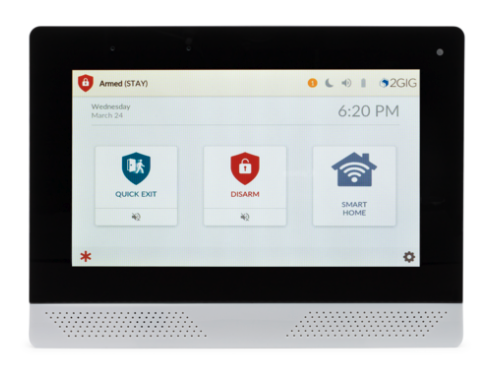CMS Partners With Intrado to Offer Text-to-911 Feature
Posted By Julia RossOur US monitoring station partner, Criticom Monitoring Services (CMS) announced its partnership with Intrado to take advantage of their Text-To-911 (NG911) feature. This allows CMS to send alarm notifications to the authorities via text, rather than requiring a voice call from an operator.

Intrado is a telecommunications company that specializes in public safety communication. They work with PSAPs (Public Safety Answering Points) to improve the delivery of calls for service. A PSAP is where 911 calls are usually routed. It can be a separate entity, or located within a particular jurisdiction's telecommunications center. Many years ago when I was a dispatcher, 911 calls in the Louisville area were received by the PSAP office and then routed to the various police, fire, or EMS dispatch centers. If the PSAP was overrun, their calls rolled over to our call center.
Traditionally, when an alarm signal is received by the monitoring station, the signal goes to a special receiver. From there, an automation software package turns that signal into plain text that the operator then uses to process the signal. This may include calling the end-user to verify if authorities are needed before dispatch, or dispatching immediately.
Up until now, when the central station operator needed to dispatch, they manually called the authorities and relayed the appropriate information. This process only takes a few minutes, usually, but when you're waiting for the authorities in an emergency situation, minutes can feel like hours.
With this new integration, information on alarms that require dispatch is sent to participating PSAPs via text. And this is not a dump-and-run situation like the old voice dialers of yore. The text conversation is two-way. The PSAP can request additional information, and the central station operator can continue to provide information until the PSAP closes the chat. This allows the information on this particular incident to get into the hands of those who are in the best position to help much more quickly and accurately than ever before.
Even with all the improvements in alarm technology in recent decades, there are still times, such as during heavy storms, when a lot of alarms go off at roughly the same time. This can overwhelm both the monitoring station and the authorities who respond to alarms. I can foresee this technology making a huge impact on the efficiency with which alarm signals are handled moving forward, and I hope that every PSAP will adopt this new technology.
CMS began implementing this partnership with Intrado in December of 2022 with three (3) agencies in Florida. As of August 2023, they have over 130 agencies on board, and as more PSAPs sign up with Intrado, they will be folded into the integration with CMS. The current list of participating agencies can be found here.
This is just another way that the alarm industry is working to improve its service to both the alarm user and the community at large. What do you think about this new partnership? Leave a comment below and let us know your thoughts. We look forward to hearing from you!



